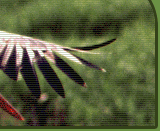| | Project Passport | | Project Title | GULF OF RIGA AS A RESOURCE FOR WIND ENERGY (short name: GORWIND) | | Project Duration | November 2010 October 2012 | | Coordinating beneficiary | Marine Systems Institute at Tallinn University of Technology | | Associated beneficiaries | In Latvia: University of Latvia, Latvian Institute of Aquatic Ecology and Latvian Fund for Nature In Estonia: University of Tartu, Estonian University of Life Sciences and Estonian Fund for Nature | | Funding | Estonia Latvia Programme 2007-2013 - 85% of total funding | | Project Location | Riga Gulf | | Project managers | Project manager of the Leading Partner Urmas Raudsepp (Marine Systems Institute at Tallinn University of Technology) Project manager at the Latvian Fund for Nature - Ainārs Auniņš | | Contacts | | Phone | +371-67830999 | | Fax | +371-67830291 | | E-mail | dubults@lanet.lv | | Address | Dzirnavu Street 73-2, Rīga | | LV-1011, Latvia | 
The main task of the project: to provide decision makers and potential developers of wind parks in the Gulf of Riga with reliable marine wind information from high resolution remote sensing data, coastal wind measurements and ensemble of Regional Climate models. Wind fields will be complemented with the information on habitat area for seals and wintering, migrating and breeding birds. Local people and authorities will be involved in the active process of selection of suitable areas for wind parks through mapping their attitude and considering the requirements of the areas for renewable energy. The activities are planned for the Gulf of Riga area. Processing of Earth Observation data remote sensing wind and ice imagery - and coastal weather station data for the retrieval of dynamic marine and coastal wind and ice maps since 2001 until 2012. Complementation of marine wind fields with model winds by ensemble of climate models until 2100. Areal counting of migrating and wintering birds and breeding seals in 2011/12. Harmonization of collected and historical data since 2001 for production of dynamic maps of different bird and seal populations. Preparing, distributing and analyzing questionnaires to get overview of peoples reaction to the development of offshore and coastal wind parks. Analyses of strategic and thematic plans for renewable energy consumption from counties around the Gulf of Riga. Preparation of decision making tool based on the spatial planning methods. Organization of stakeholder and public forums. The project aims directly at producing policy-relevant, scientifically based information on wind energy fields, the most affected key natural species populations and social reactions and economic benefits for the entire Gulf of Riga area. The decision making tool based on the spatial planning methods on GIS environment will be developed that facilitates the common planning for exploitation of wind energy in the Gulf of Riga area. Dynamic maps of wind energy, ice condition, migrating and wintering bird populations, and seals since 2001 with projection to future climate will be produced. Indicators for spatial planning of peoples attitude towards development of wind parks and for quantification of local plans of renewal energy consumption will be developed and integrated to decision making tool. The outputs of the project contribute to the elaboration of policy relevant, environmental and socio-economic issues related to exploitation of renewable energy that have cross-border dimension. 
Latvian Fund for Nature will provide the information on territorial distribution and densities of marine birds in different seasons for the Latvian part of the project area as well as do spatial modelling of the occurrence/densities of seabirds related to various biotic and abiotic factors. We will be responsible for implementation of the Work Package 3 (WP3) in cooperation with the Estonian University of Life Sciences (coordinator of WP3), Estonian Fund for Nature and the Latvian Institute of Aquatic Ecology. For more information, please, see the project website |








